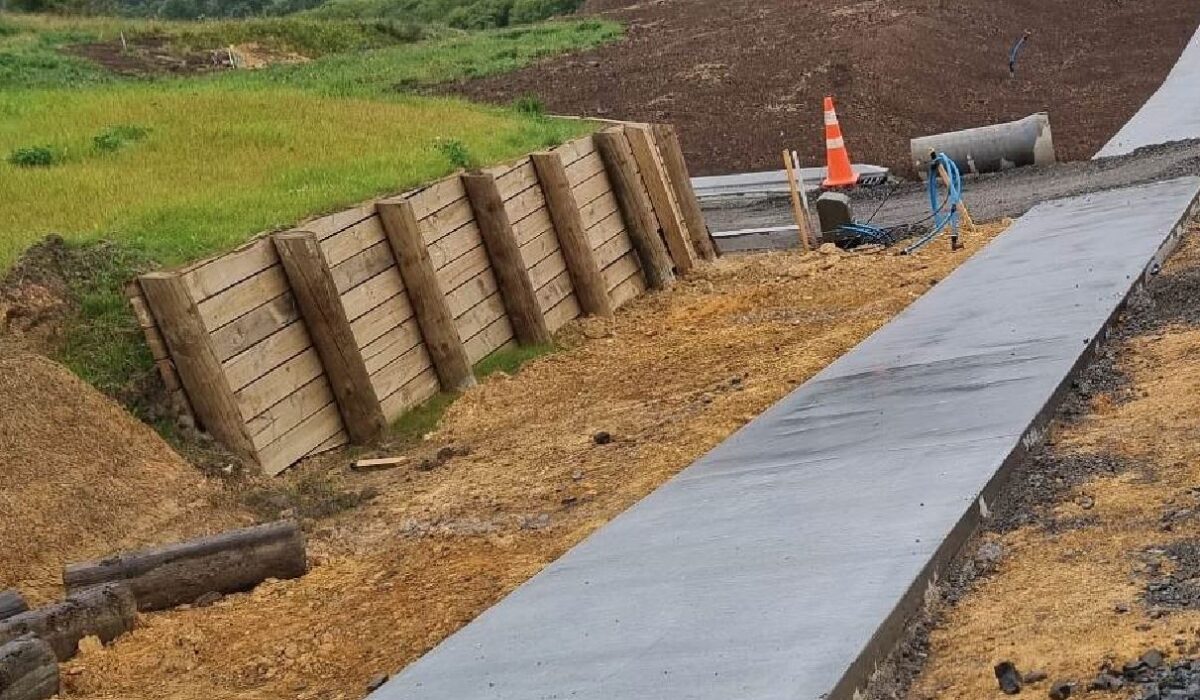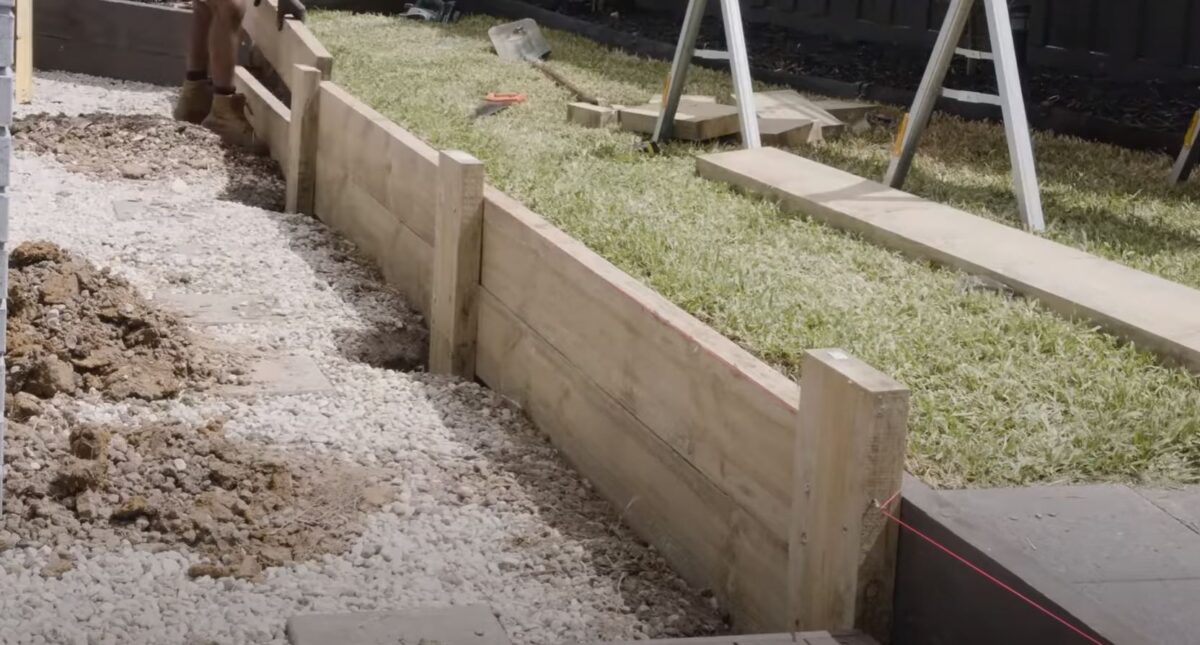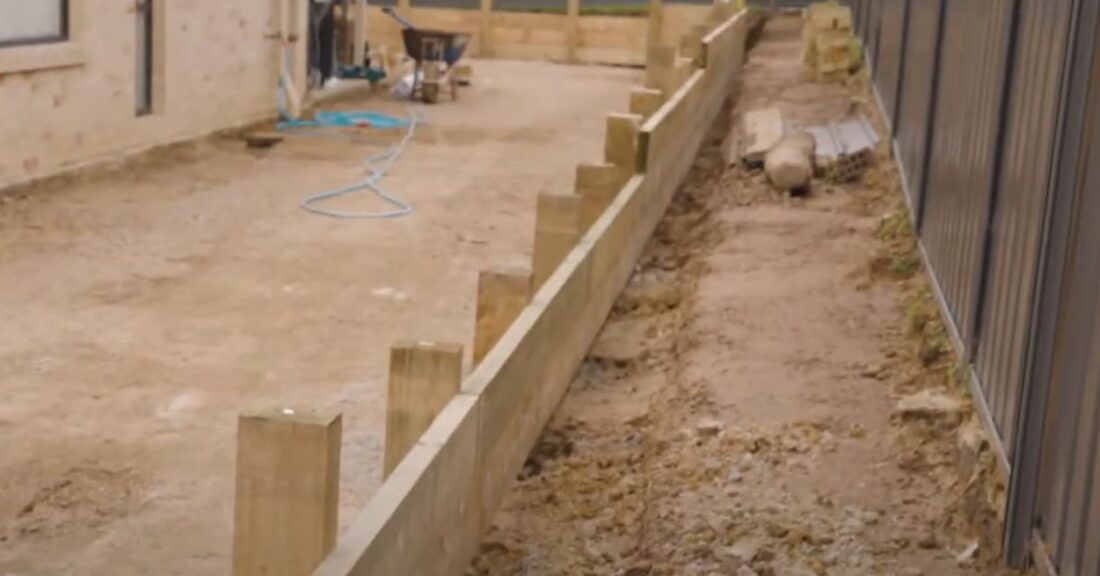Understanding Timber Retaining Walls in Auckland
Timber is a preferred choice for many Aucklanders looking for a natural and aesthetically pleasing option for retaining walls. From Ponsonby’s heritage houses to the modern architectural wonders in Albany, timber retaining walls complement diverse architectural styles while performing the pivotal role of holding back soil. However, understanding the science behind these walls and their durability is crucial.
The Crucial Role of Drainage
For any retaining wall, water is a silent adversary. When rainwater or underground moisture accumulates behind the wall, it creates hydrostatic pressure, which poses a threat to the wall’s structural integrity. To counteract this, proper drainage is not just a recommendation—it’s imperative.
Timber: Why Drainage Matters Even More
Timber, being an organic material, is susceptible to decay, especially when consistently exposed to moisture. Drainage helps in not only alleviating pressure but also in enhancing the lifespan of the timber wall. Prolonged exposure to moisture can lead to rot, mould, and ultimately structural failure. In a city as rainy as Auckland, with suburbs like Remuera experiencing sporadic heavy showers, this becomes even more vital.
Installation of Proper Drainage Systems
The process of integrating drainage involves more than just adding weep holes. A comprehensive drainage system includes:
- Gravel Backfill: A layer of gravel placed directly behind the wall ensures that water trickles down smoothly and doesn’t pool.
- Drainage Pipes: These pipes, often perforated, run behind the wall, carrying water away from the timber structure.
- Weep Holes: Small holes are created at intervals in the wall, allowing any trapped water to seep out, thus alleviating any undue pressure.
Health and Safety Considerations
While timber retaining walls with proper drainage are sturdy, it’s essential to monitor them periodically. Incorrect drainage installation can lead to wall bulging or even collapse, posing a hazard to both residents and passersby. Especially in densely populated Auckland suburbs like Mt. Eden, such risks need to be minimised. Always ensure that professionals handle drainage installations.
Cost Implications
While adding drainage can initially increase the cost of your timber retaining wall project, it’s a worthy investment. Consider it a protective measure that ensures the longevity of the wall, saves on potential repair costs, and upholds the value of your property, especially in competitive housing markets like that of Howick.
Exceptions to the Rule
While drainage is fundamental, there are situations when the need might be less pressing. For example, smaller retaining walls less than 1 metre high or walls in areas where water logging is minimal might not require extensive drainage. However, consulting with experts, like those at Quality Fencing Auckland, ensures that your specific needs are addressed.
Navigating Auckland’s Council Regulations
The Auckland Council has stringent regulations and guidelines when it comes to construction. Ensure your timber retaining wall, along with its drainage, adheres to these guidelines. Non-compliance can lead to penalties and the need for costly adjustments down the line.
Reaping the Benefits
A timber retaining wall with efficient drainage not only stands the test of time but also seamlessly integrates into Auckland’s diverse landscapes. For those considering this for their homes, partnering with Quality Fencing Auckland guarantees a blend of craftsmanship, safety, and value for money.
Key Takeaways:
Importance of Drainage:
Timber retaining walls absolutely require proper drainage. This isn’t just for the sake of the wall’s structural integrity, but also to extend its lifespan by preventing decay and rot.
Moisture’s Impact:
Being an organic material, timber is naturally susceptible to decay when exposed to prolonged moisture. Effective drainage ensures the wood doesn’t rot or become a breeding ground for mould.
Comprehensive Drainage System:
Simply adding weep holes isn’t enough. A functional drainage system involves a gravel backfill, drainage pipes, and strategically placed weep holes to manage and redirect moisture away from the wall.
Safety First:
Walls without effective drainage can become safety hazards, especially in areas of Auckland that experience heavy rainfall. It’s essential to periodically monitor the health of your wall and ensure professional installation of the drainage system.
Council Regulations:
The Auckland Council has clear guidelines regarding retaining wall construction. It’s imperative to ensure any retaining wall, along with its drainage system, adheres to these standards.
Cost Implications: Investing in a drainage system might seem like an added cost initially, but it’s a wise investment in the long run. It not only safeguards the wall’s longevity but also protects property value, especially in competitive markets.
Trust the Experts:
For residents of Auckland, partnering with professionals like those at Quality Fencing Auckland ensures that the retaining wall is not only aesthetically pleasing but also stands the test of time with a robust drainage system in place.
Frequently Asked Questions (FAQs)
Why is drainage important for a timber retaining wall?
Drainage is crucial to prevent hydrostatic pressure build-up behind the wall. Additionally, as timber is susceptible to rot when exposed to prolonged moisture, drainage ensures the wall’s longevity and structural integrity.
Are there specific drainage systems recommended for timber walls?
Yes, a comprehensive drainage system for timber retaining walls typically includes a gravel backfill, perforated drainage pipes, and weep holes at regular intervals.
Can I skip adding drainage if my wall is not very high?
While smaller walls under 1 metre might not require extensive drainage, it’s still advisable to consult with experts. Even smaller walls can suffer from moisture-related issues if not adequately protected.
How often should I inspect my timber retaining wall for water damage?
It’s recommended to check your wall after heavy rainfalls and at least twice a year, especially in Auckland’s rain-prone suburbs, to ensure there’s no water logging or signs of decay.
Does Auckland Council have specific guidelines for timber retaining walls?
Yes, Auckland Council has set guidelines and regulations for retaining walls, including their drainage systems. It’s crucial to adhere to these to avoid potential penalties and ensure the wall’s safety.
Is investing in drainage systems expensive?
While adding a drainage system can increase the initial cost, it’s a long-term investment. Proper drainage prevents potential repair costs and ensures the wall’s longevity, ultimately saving money in the long run.
Who should I approach for building a timber retaining wall with proper drainage in Auckland?
For a blend of expertise, safety, and value for money, consider engaging professionals like Quality Fencing Auckland. They ensure your retaining wall is not only attractive but also durable and compliant with local regulations.
References for Further Reading
- Auckland Council’s Guidelines on Retaining Walls.
- Timber Design Standards, New Zealand Wood.
- “Hydrostatic Pressure on Retaining Walls”, New Zealand Journal of Civil Engineering.
- Best Practices in Timber Wall Construction, Quality Fencing Auckland Whitepaper.
Legal Disclaimer:
The information provided in this document is intended for general informational purposes only and does not constitute legal, professional, or expert advice. It is advisable to seek guidance from legal or professional experts familiar with your specific circumstances before making any decisions based on the content herein. Neither the author nor the publisher is responsible for any damages or losses resulting from reliance on the information provided in this document. Always consult with an appropriate professional to address your specific needs.



